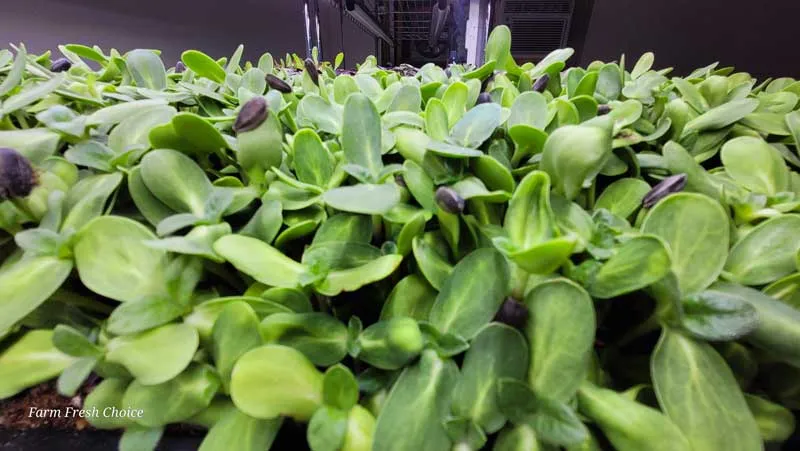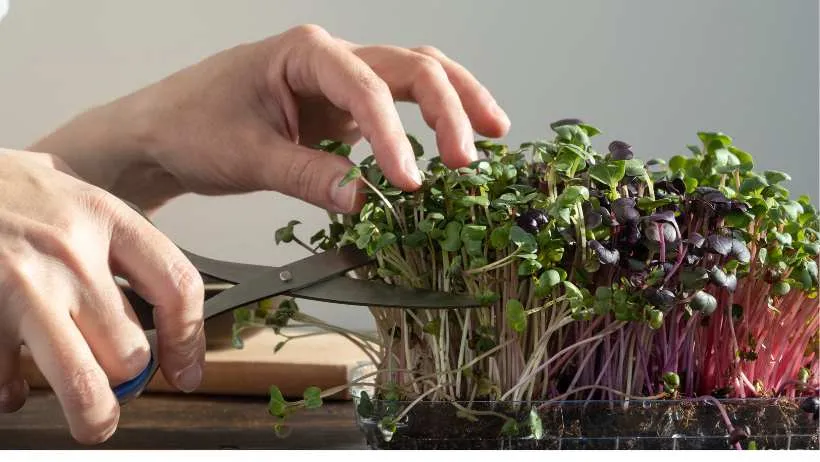You soaked the seeds, filled the trays, waited patiently, and still ended up with spotty growth or floppy, pale stems. Sound familiar? Sunflower microgreens aren’t the easiest to grow, especially if you’ve only tried peas or radishes before. These big seeds have quirks; even one small misstep can throw off your entire crop.
Maybe you’ve battled stubborn hulls that refuse to fall off or trays that suddenly smell off. Don’t toss your setup just yet. The good news? Most of these problems are fixable and can be traced back to a few common mistakes.
If you’re ready to stop guessing and start growing trays that look and taste great, this quick guide will show you exactly what to avoid and how to fix it.
3 Common Mistakes to Avoid When Growing Sunflower Microgreens
Even experienced growers can encounter trouble with sunflower microgreens. Let’s avoid these common issues so your trays stay lush and productive.
Mistake 1: Skipping the Seed Soak or Not Soaking Long Enough
Sunflower microgreen seeds are tough and need a proper soak to sprout evenly. If you skip or rush through this step, you’ll probably have spotty growth and a tray of stuck-on seed hulls. Most growers find success soaking their seeds anywhere from 4 to 8 hours, but not every batch is the same. Some seeds may need just four hours, while others benefit from the full eight. You must test a few soak times to find what works best for your seeds and water conditions.
If you soak your seeds for too short a time, they might not absorb enough moisture to trigger consistent germination. If you soak them too long, you risk drowning them or encouraging early rot. When done right, a proper soak helps soften the seed shell and jumpstart the sprouting process.
If you notice bare patches in your tray or spend too much time picking off hulls, your soak time needs adjusting. Keep track of results as you experiment—that way, you’ll dial in the perfect prep for future batches.
Mistake 2: Poor Drainage or Overwatering
Too much water is one of the fastest ways to ruin a tray of sunflower microgreens. Your watering routine might be the culprit if you notice a sour smell, slimy roots, or yellowing stems. Sunflower roots need oxygen just as much as moisture, and soggy soil suffocates them quickly. Without good drainage, water collects at the bottom of the tray, creating a perfect environment for mold and bacteria to spread.
To avoid this, always use growing trays with drainage holes. They allow excess water to escape and help you control moisture more precisely. Bottom watering is another helpful method—pour water into the outer tray and let the roots soak it up from below. This keeps the surface dry, reducing the chance of fungus or disease.
You’ll also want decent airflow around your trays to help moisture evaporate evenly. Fans can make a big difference, especially in humid rooms. If your sunflower microgreens have been struggling for no obvious reason, look at your watering habits. Sometimes, letting the trays breathe better can quickly turn things around.
Mistake 3: Leaving Them in the Blackout Phase Too Long
Sunflower microgreens need a blackout phase to get strong, uniform germination—but if you leave them in the dark too long, they’ll stretch too far and lose their color. These sprouts naturally reach for light in the blackout, and after about 2 to 3 days, they’re usually tall enough and ready to move under grow lights. Any longer, you’ll start seeing pale, thin stems that flop over instead of standing tall.
Room temperature affects how quickly your seeds grow during blackout. Warmer temperatures speed things up, meaning you might only need two days. In cooler rooms, a third day may be helpful—but push past that, and your microgreens can get leggy. Some growers wait for the hulls to fall off before flipping the lights on, but this can backfire. It’s better to introduce light and let the hulls dry, making them easier to brush off by hand or with gentle airflow.
To keep your sunflower microgreens sturdy and vibrant, watch their height during blackout and set a reminder to check on them daily. It’s time for light once they reach 1 to 2 inches and push against the cover.
Bonus Tip: Inconsistent Lighting After Germination
Once your sunflower microgreens come out of blackout, they need strong, steady light immediately. Without it, stems turn pale, grow unevenly, or lean hard in one direction. Sunflowers are especially light-hungry compared to other microgreens, so dim windows or weak bulbs won’t cut it. Poor lighting is often to blame if your greens look spindly or fall over.
Use a full-spectrum LED grow light just a few inches above the canopy. Keep it on for 12 to 16 hours a day to mimic daylight and encourage thick, upright growth. Avoid turning lights on and off at random times—consistency helps them grow more evenly. A cheap timer can make this part hands-off. If you’re growing near a window, rotate trays daily so both sides get equal light exposure.
Check how your microgreens respond over the first few days. Strong lighting gives them a rich green color and firm stems. If they’re looking pale or tilted, adjust the light height or duration until they perk up. A simple lighting tweak can turn a struggling tray into a healthy, picture-perfect harvest.
Conclusion
Sunflower microgreens can be tricky initially, but small changes make a big difference. Your trays will bounce back fast with a proper soak, careful watering, and the right amount of blackout and light. Don’t get discouraged if your last batch didn’t go as planned—tweak your setup and try again. A fresh harvest’s crisp texture and nutty flavor are worth the effort.
More Microgreen Tips & Insights
How to Prevent Mold On Sunflower Microgreens
Sunflower Sprouts: What They Really Look Like
How to Grow Sunflower Sprouts Microgreens
What Are Sunflower microgreens?
Sunflower Microgreens Its Benefits and Uses






